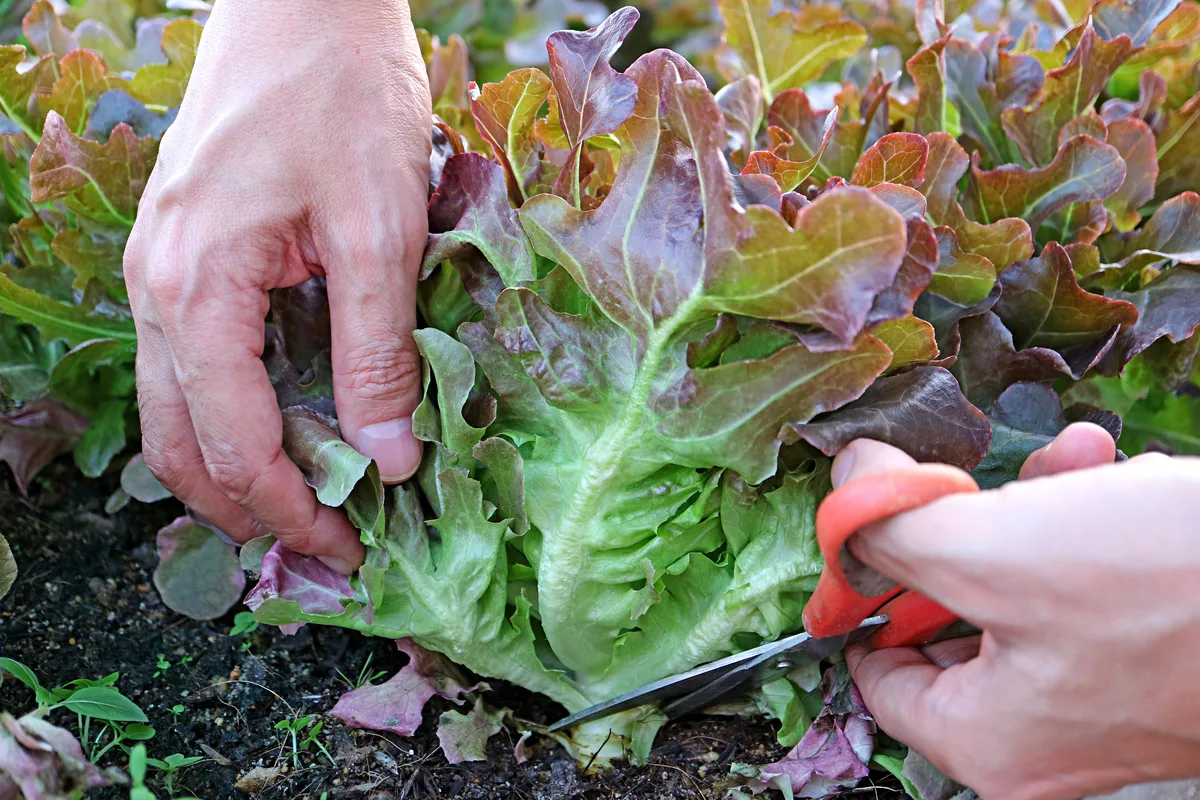
If you think lettuce is easy to grow, try sowing seeds a few seasons in a row and see if your crop is the same each year.
Chances are good that your outdoor garden harvests will vary wildly.
Lettuce is affected by temperatures, too much moisture, too little water, pests, hail and more. Yet you usually get warning signs before it is too late. Beyond which point you may as well leave your lettuce for slug fodder.
On second thought, better compost the leaves when they are no longer good for you to eat.
It’s worth observing, that in greenhouse conditions, you have much more control over the weather (heat/sun, irrigation/rain, etc.). Though you may want to save that precious growing space for some even more difficult to grow crops.
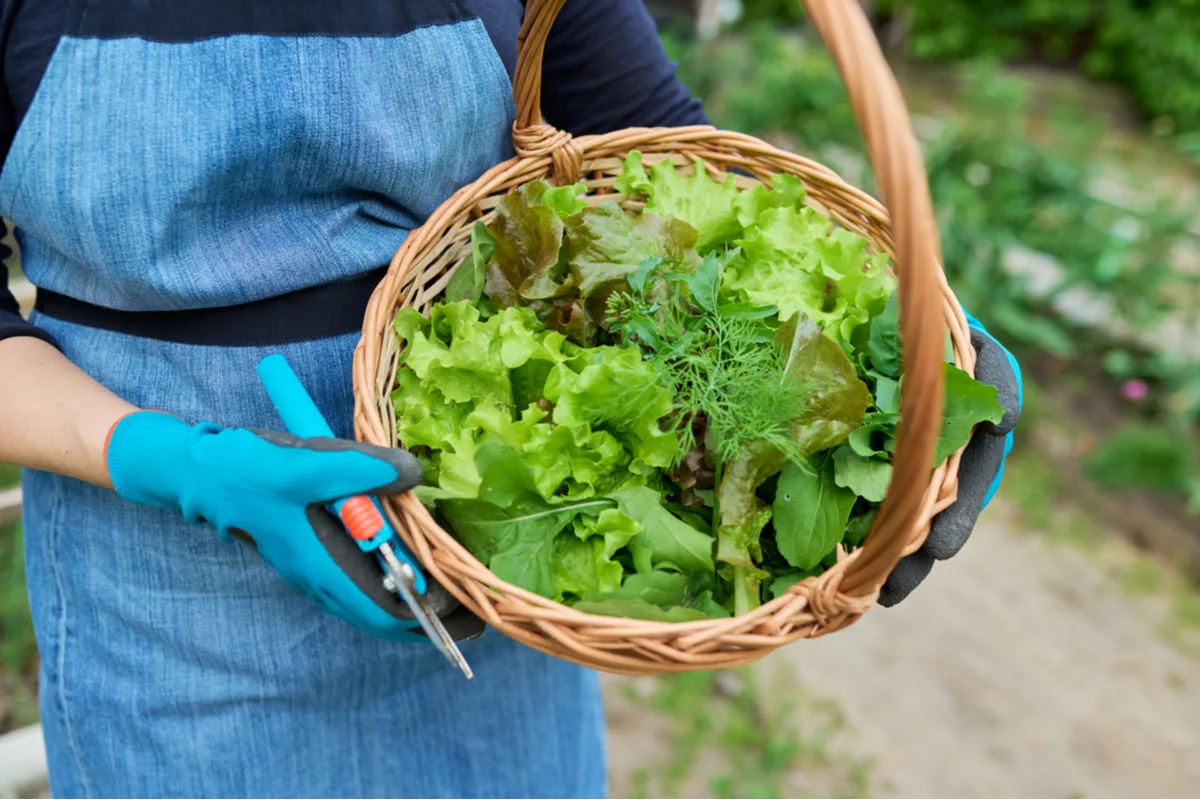
4 Types Of Lettuce You Can Grow
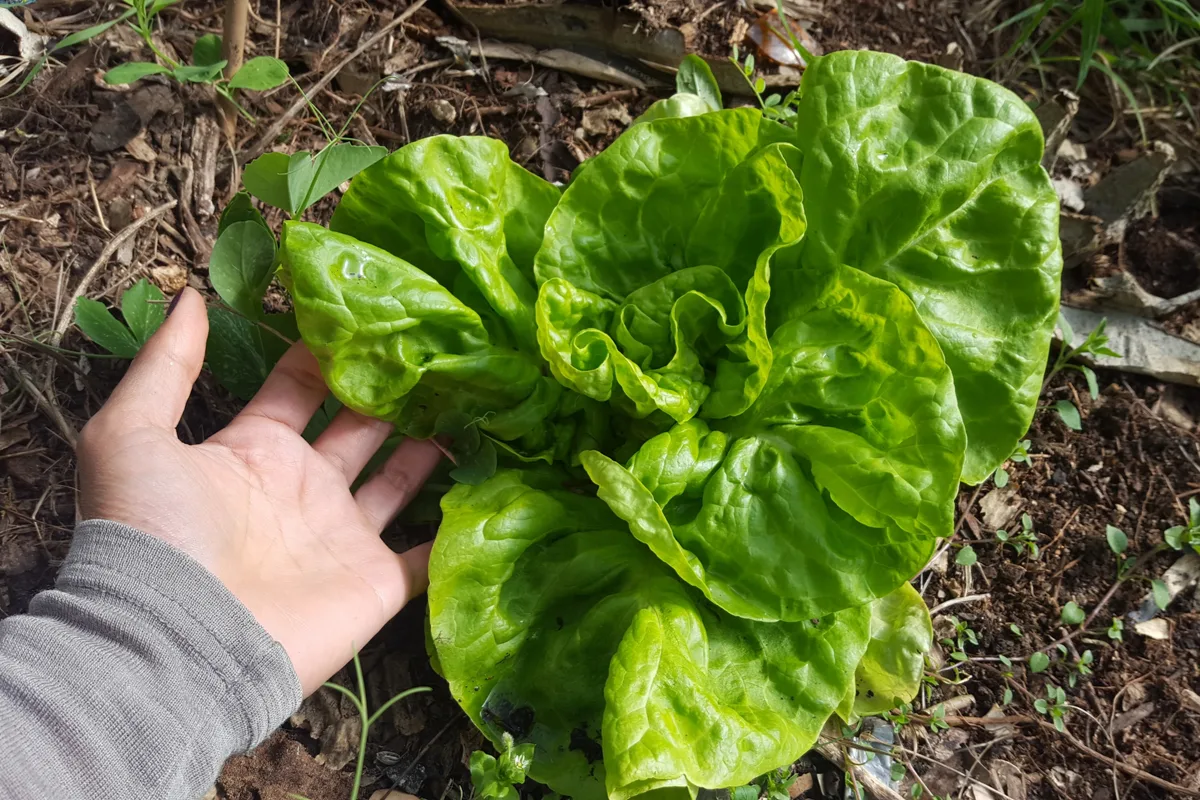
While loose-leaf lettuce is considered the easiest lettuce to grow, it is worth reading up on how to grow store-bought-worthy heads of Iceberg. For there is a great difference between growing these two varieties.
For those lettuce-lovers out there, it is useful to know your lettuce types.
- Loose Leaf
- Butterhead
- Romaine/Cos
- Iceberg/Crisphead
You know what you like to buy from the store. So, what would you like to grow in your garden?
Loose leaf lettuce is headless.
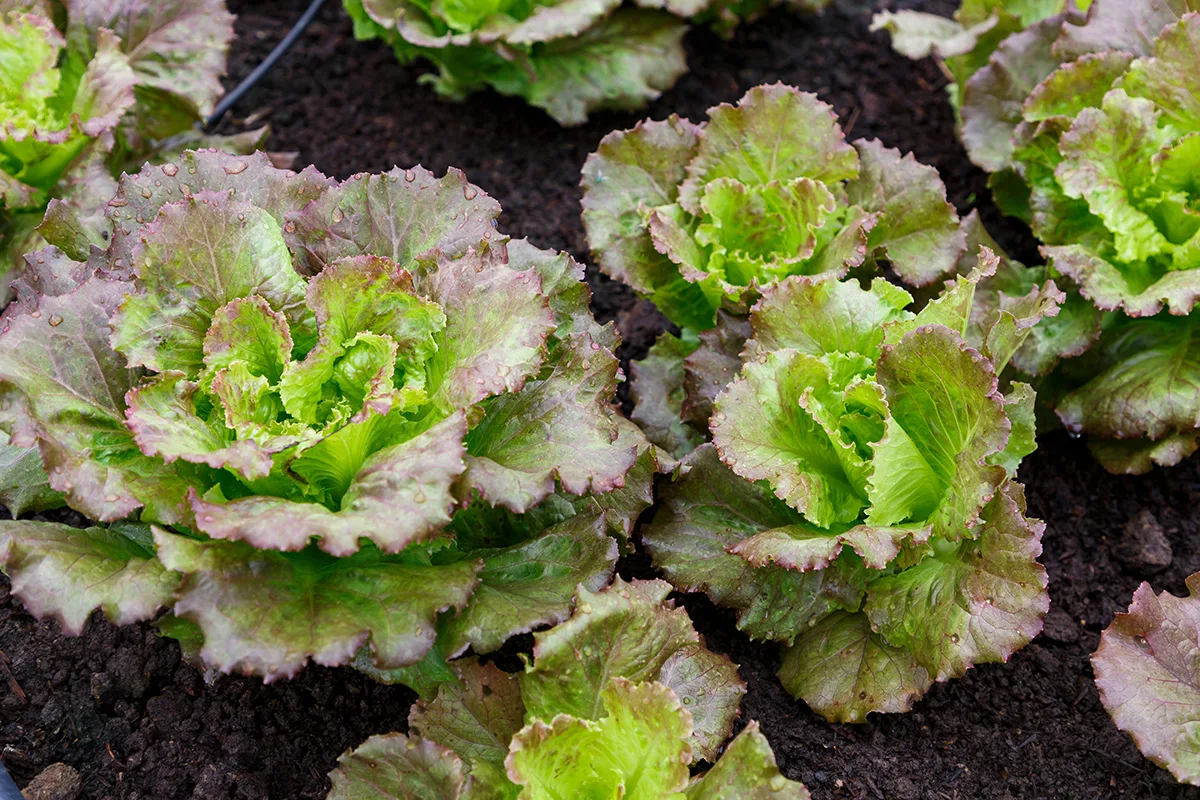
That is, it doesn’t form any sort of head at all, just leaves. Harvesting is ultra-easy. Simply pluck the individual leaves a couple of inches above the ground.
Wash well and munch as desired.
Harvest only as much as you need for every given meal or snack and let the stalks produce more leaves as you let your belly rest.
Although it matures in a mere 45 days, you can begin eating it much sooner than that. As you start thinning the overly-dense rows (how did those get there?) you can sample your work.
The great thing about loose-leaf lettuce, outside of its ability to keep growing throughout the season, is that the flavor is far superior to Iceberg lettuce. That, you’ll have to plant for yourself.
Related reading: How To Grow Cut-And-Come-Again Lettuce
Butterhead lettuce doesn’t actually taste like butter.
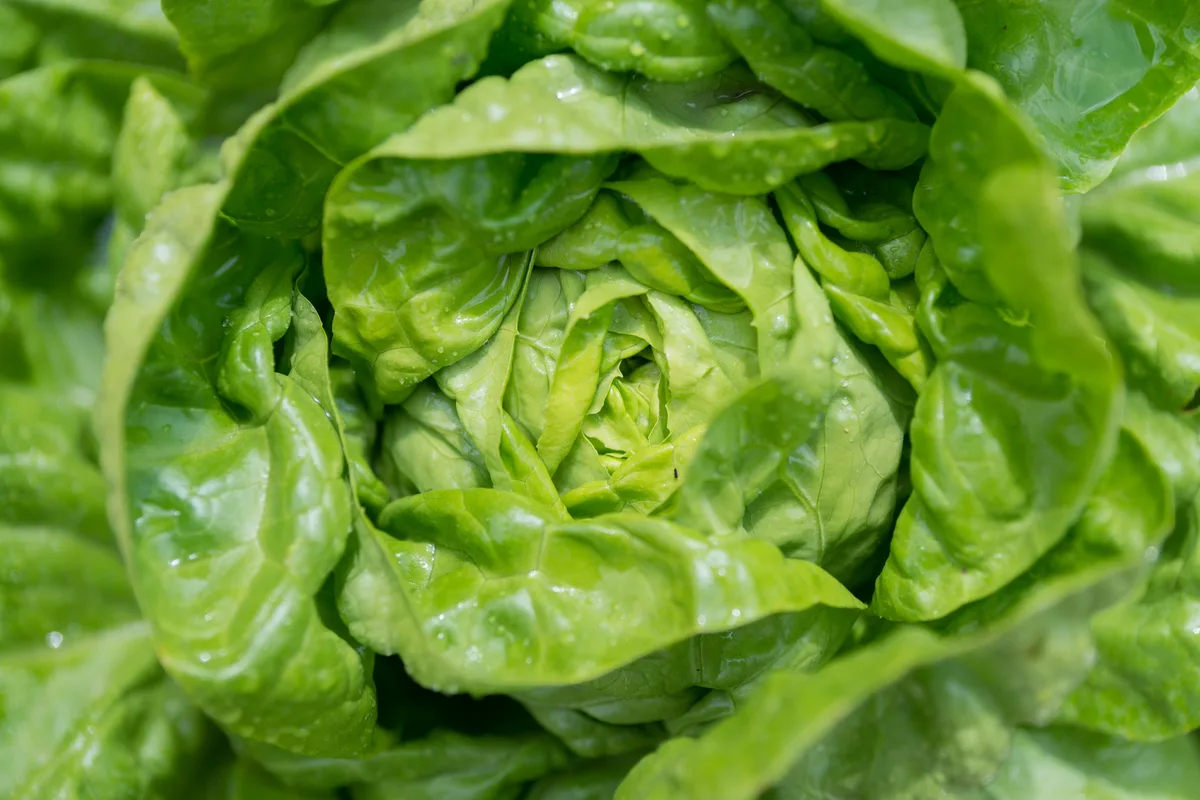
Though some people argue that it does. You can decide this one on your own.
It might be less confusing if people called it by its other names: Boston or Bibb.
In any case, it is similar to a Crisphead, in that it does form a head, albeit a very loose one. Leaves are tender and mild, making them an all-around first choice for salads with few ingredients.
One thing to watch out for when growing butterheads is that they have a tendency to grow bitter in the heat of the sun. If you live in a very hot climate, shade cover may be necessary. Or plant them in partial shade, to begin with.
Days to maturity for butterheads/Bostons/Bibbs/buttercrunches extend from 40-70 days, so choose your variety according to your garden plans.
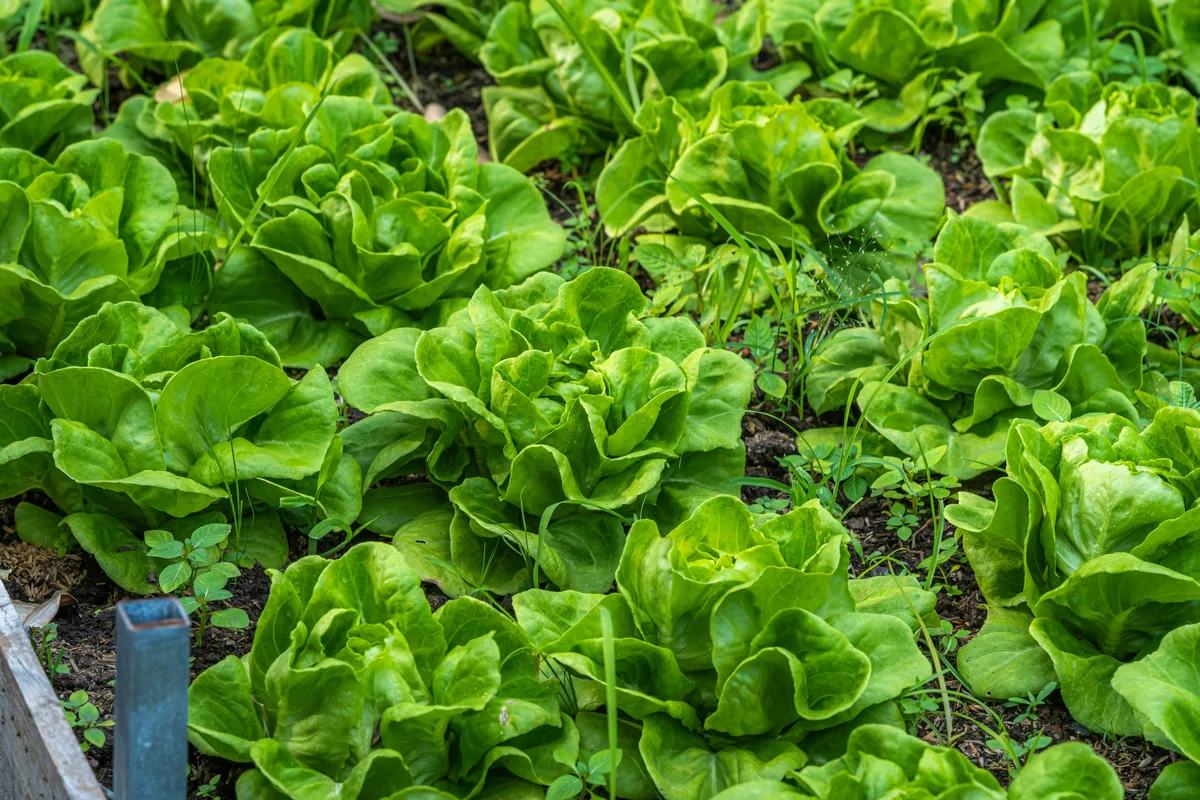
Fast-maturing heads are less likely to bolt.
From the store, you get the whole head. When you grow it in your garden, you can eat the outer leaves first, one-by-one, working your way up the plant. A great option when you are harvesting for one.
Romaine/Cos lettuce – Romaine hearts are for Caesar salads.
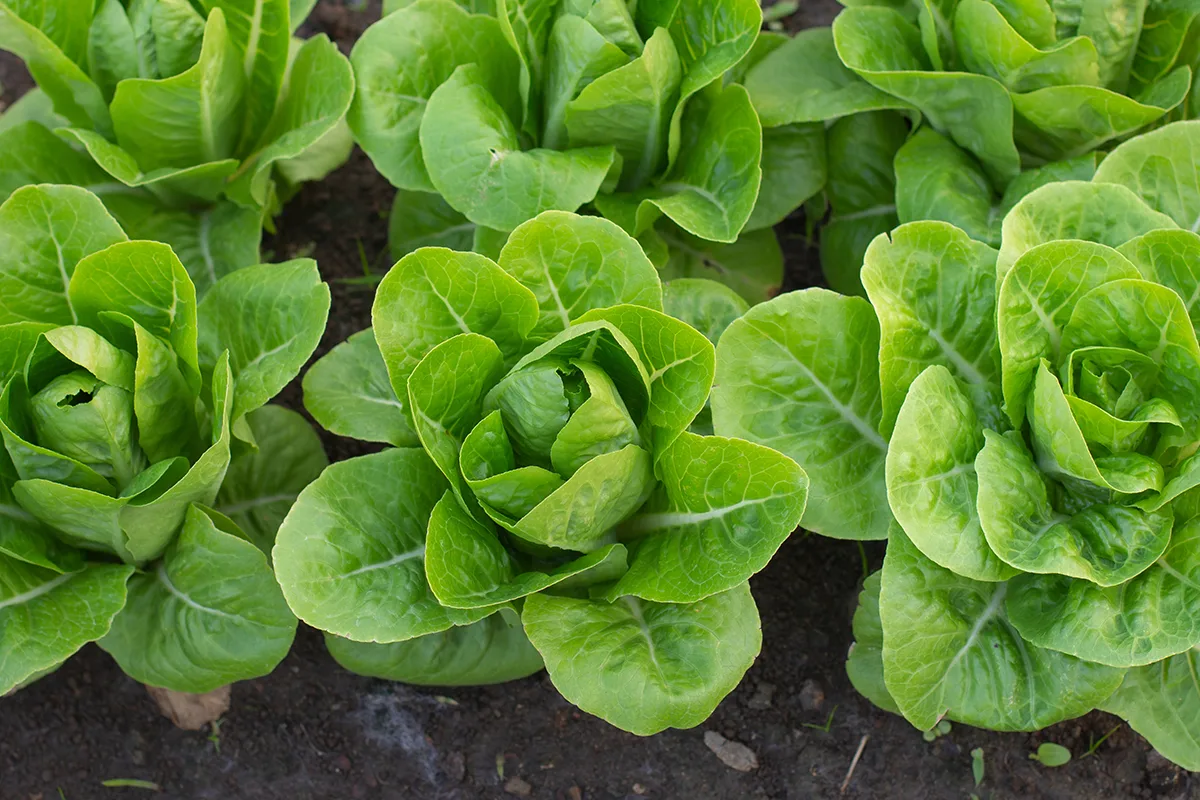
If you are seeking a variety of lettuce with more nutrients and even more flavor, Romaine is what you will find.
Both the Romaine leaves and hearts are a beneficial source of vitamins A, C, K. Iron and calcium are included.
Looks-wise, Romaine differs from the other lettuce types in that it forms an elongated head. In some instances growing up to a foot tall.
The outer leaves are darker green and thicker than butter lettuce. Closer to the center, or the heart, the leaves are a pale shade of green. Flavor-wise, the Romaine hearts are amazing and often the star of sensational Caesar salads.
But, back to the garden for just a second. They might be slow to bolt, though they can become bitter in the heat of summer.
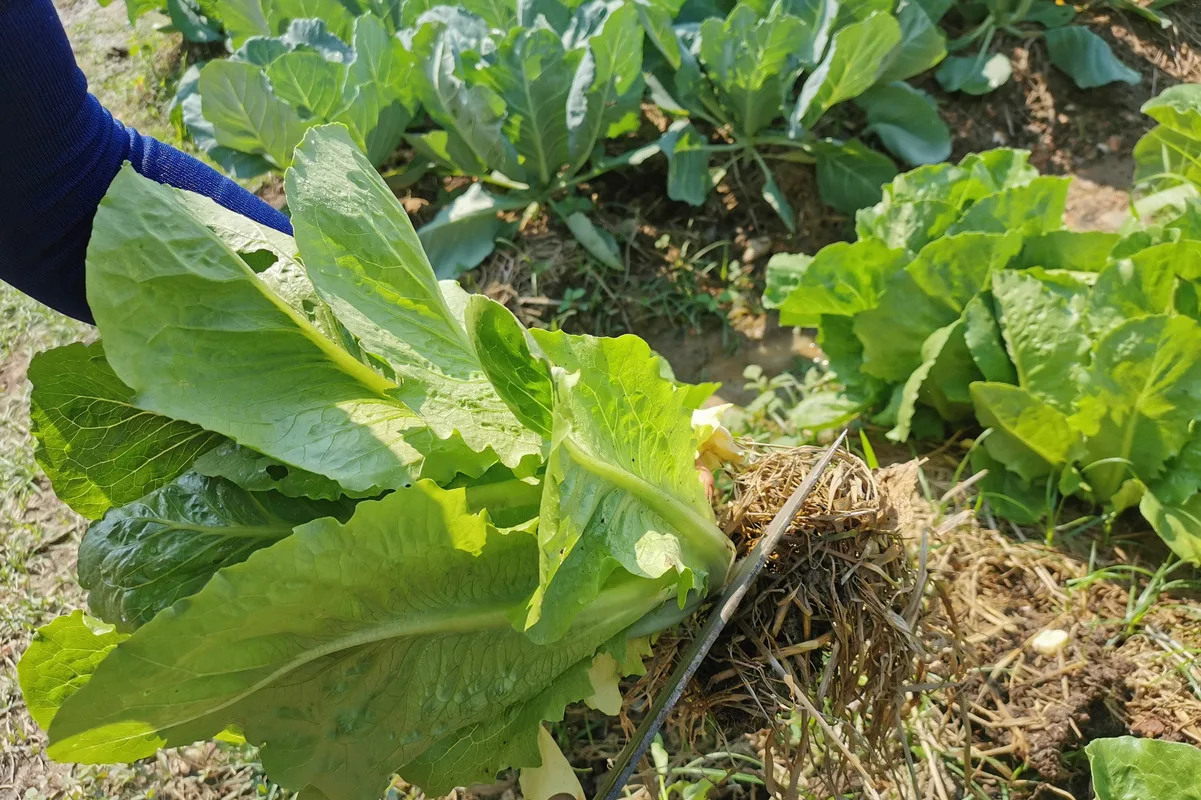
In the case of Romaine, you shouldn’t strip them of their leaves. Wait until the entire head is ready for harvest. Days to maturity for Romaine lettuce is 60-80 days.
You can store a head of Romaine in the fridge for a few days before consuming it.
Iceberg/Crisphead is the most challenging lettuce to grow.
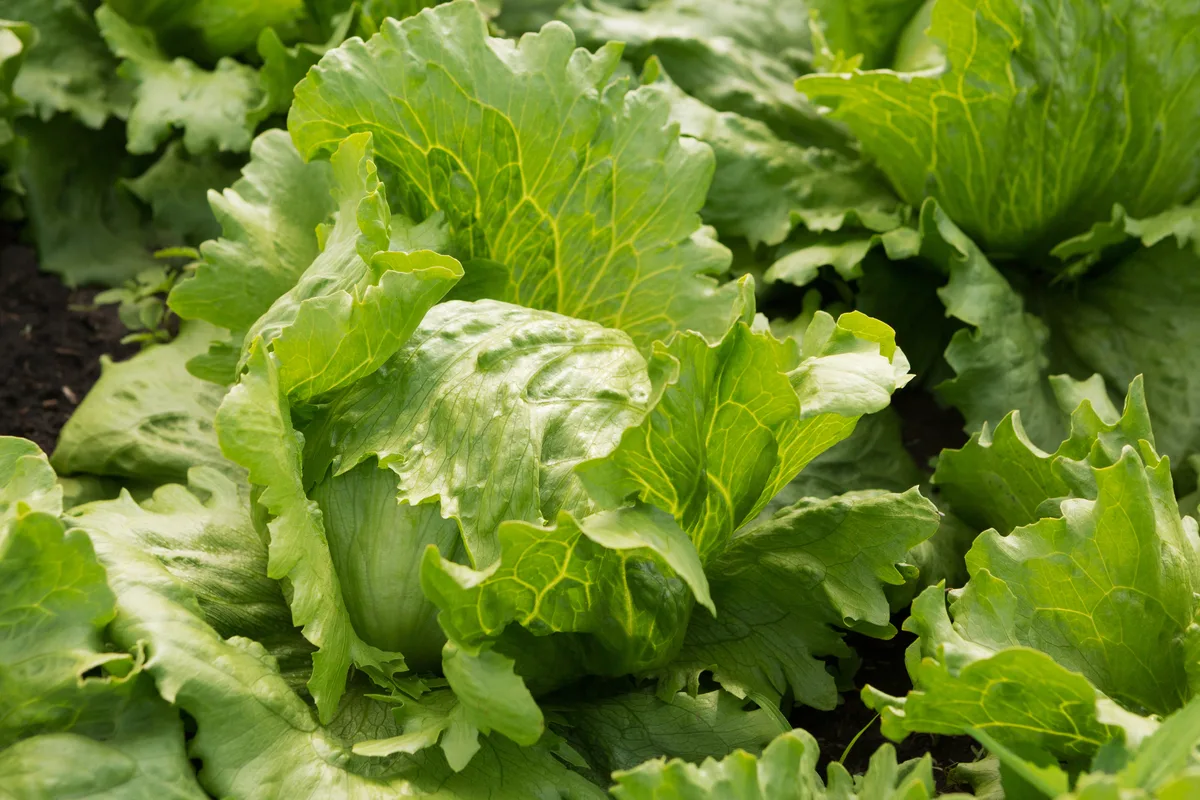
So, why grow it?
Just to prove you can as you become a self-reliant gardener who doesn’t need to buy anything from the store. At least, not a perfectly formed head of lettuce.
Not only is it more difficult to grow in the open-air garden, but it also has the lowest nutritional value of any lettuce. Yet, for reasons not immediately apparent, Iceberg lettuce is well-known and loved regardless of these slight downfalls.
Iceberg lettuce also grows slowly, reaching maturity around 80 days and is more sensitive to heat than other lettuce types.
But, the shape, the classic-ness of it all. Cutting into one is to remember your childhood with a crunchy wedge on your dinner plate. Smothered in Ranch or French dressing.
Now that you are grown up, you can learn how to make your own salad dressings too:
But it’s going to take some work to form a crisp head worthy of incorporating into that salad.
In the meantime, here are 20 varieties of lettuce to grow through fall, even winter.
Just to keep your gardening skills up to date and ever-growing.
Now, that you know way more about lettuce than you ever thought you would, let’s move on to what can make those lush leaves difficult to grow.
At least, lettuce is always easy to eat.
13 Problems With Growing Lettuce
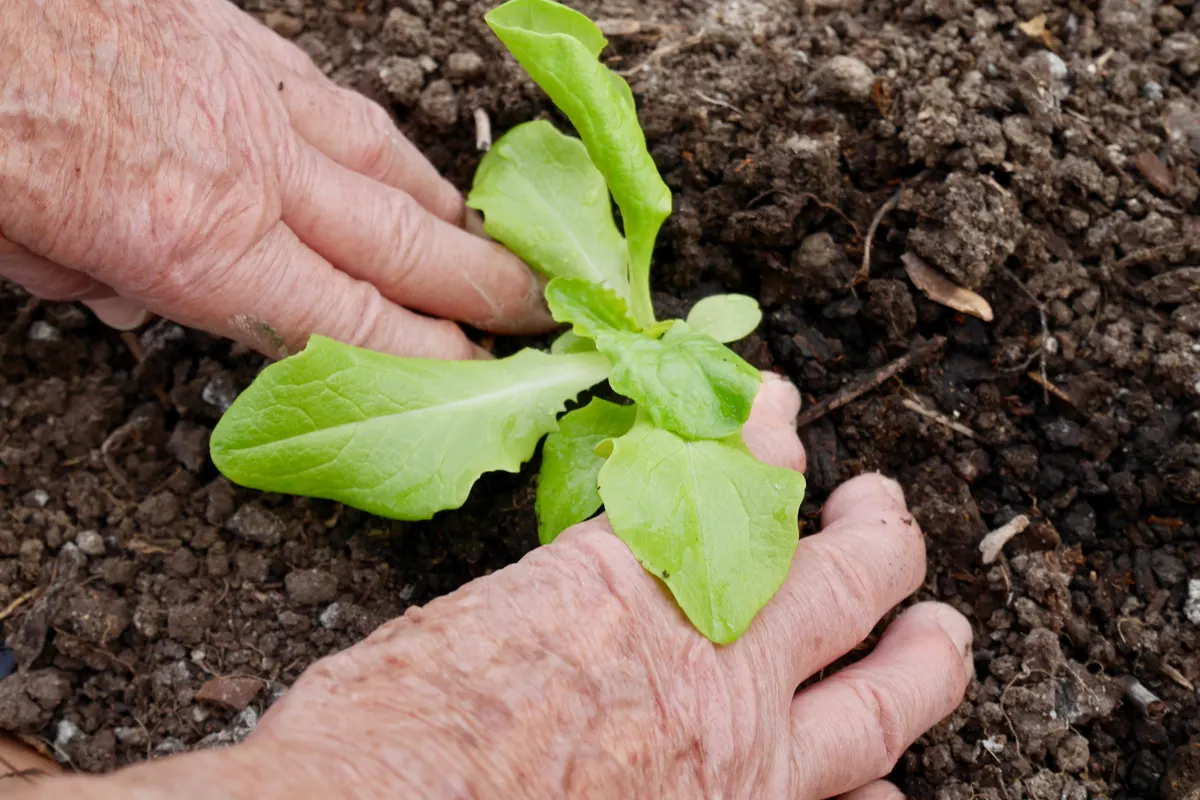
As we’ve mentioned, lettuce is generally considered an easy-to-grow plant. It is nothing like trying to grow breadseed poppies.
Or tomatoes.
In my experience, growing tomatoes can be ridiculously easy or terrifyingly difficult. It all depends on what the summer wants to throw at it: rain, high winds, hail, drought, burning rays of sunshine, frosty mornings.
You name it and the sky will bring it. And then come the insects…
You get the picture. Gardening is never really easy. There will always be some challenges along the way.
The key to having an abundant harvest (of any crop) is to overcome these situations with ease. Preferably with organic production in mind.
1. Lettuce Seeds Fail to Germinate
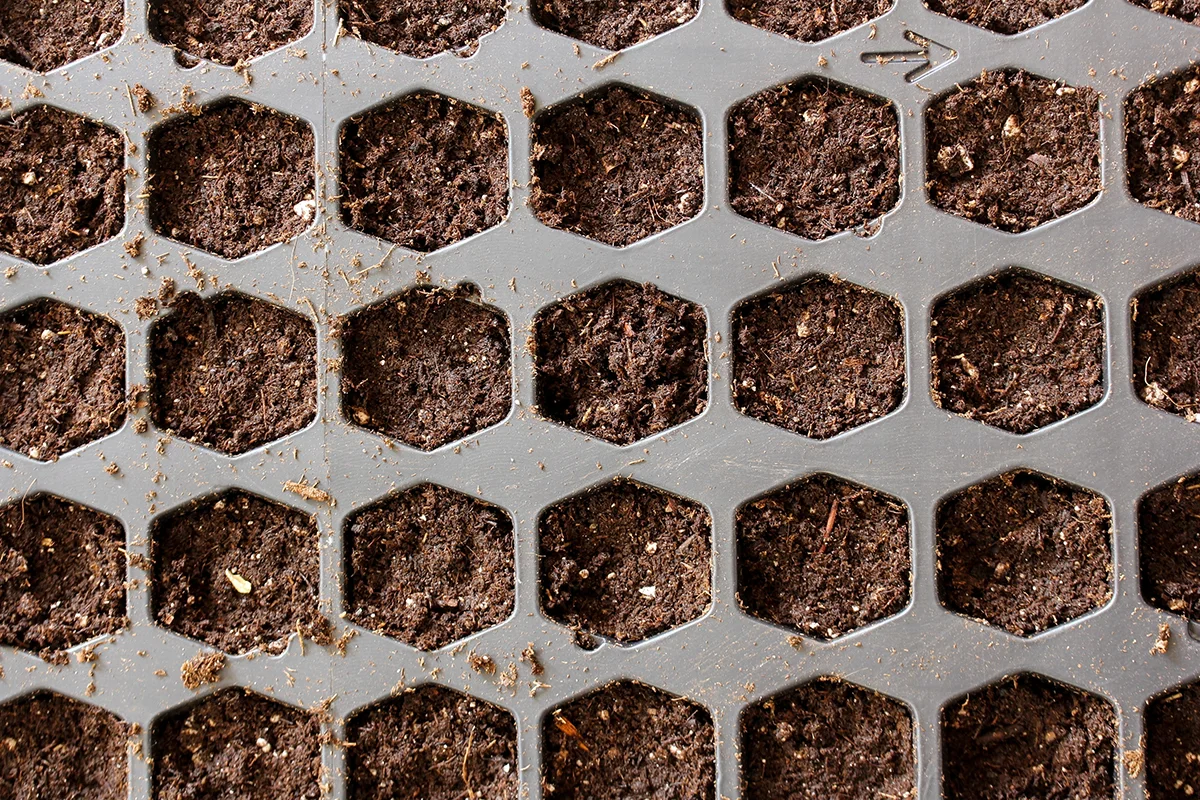
There are a few reasons that seeds fail to germinate.
Too little water or too much water. Cold temperatures or high temperatures. Fungus, old seed stock or perhaps the birds have swallowed them before they even got a chance to do their thing.
Lettuce seeds, like all other garden crops, have an optimal temperature for germination. Seeds germinate best in temps of 55 to 65°F (13 to 18°C).
If you try to plant them in the heat of summer, you’ll have far less success than if you’d have stuck to what gardeners know about planting in spring and fall. All because they are cool-season crops.
Most varieties of lettuce seeds can be sown 2 weeks before the expected last frost date. Alternatively, they can be sown 8 weeks before the first fall frost.
Cool gardening tip:
Believe it or not, there are times when you want to lower your soil temperatures in order for certain seeds to germinate. The production of lettuce is one of those times.
To sow lettuce seeds in the fall, the best way to lower the heat of your soil is to moisten the ground and cover it with a thick layer of hay or straw. Leave the mulch there for an entire week, then pull it back and sow your lettuce seeds in your cooler soil.
Or you could pull back the mulch just enough to plant the no-dig way.
Related reading: 10 Reasons Your Seeds Aren’t Germinating & How To Fix It
2. Seedlings and Leaves Have Been Chewed and Torn by Someone Other Than You
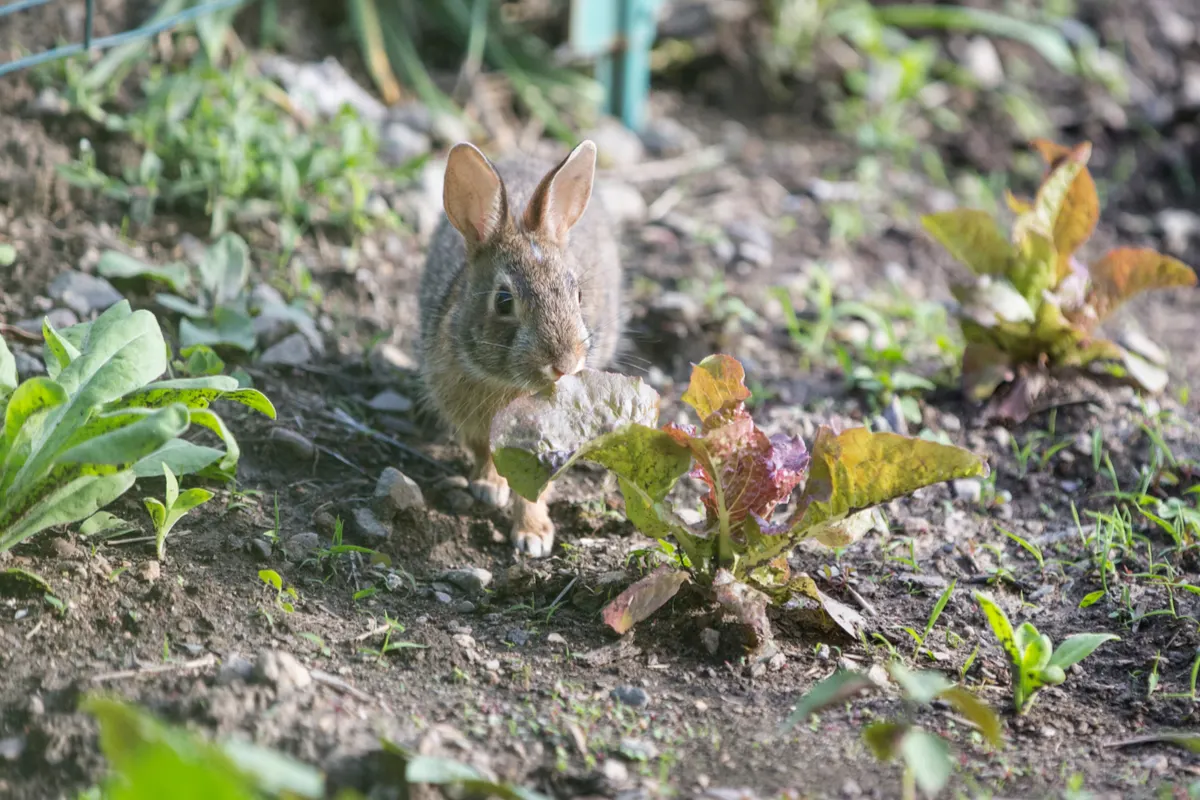
It’s no secret that other creatures like lettuce just as much, or even more, than you. The slight crunch, the sweetest bitter taste, the ease of chewing. All you need for a salad is growing right out there in your very own garden.
And don’t the slugs, rabbits and deer know it!?
Not to mention if you have some farm animals of your own.
But wait, some other creatures are prone to nibbling on your growing lettuce leaves too. If you notice ripped leaves, birds are usually the cause.
Birds can also be the reason your lettuce seeds don’t germinate.
The easiest way to find out is to catch them in action. Acting as a garden spy will help you to better observe nature and swoop in on the situation.
If birds are causing a lettuce shortage, floating row covers are the short-term answer to your growing problems. They can be removed once the seedlings are mature enough to hold their own.
3. Leggy Lettuce

Elongated lettuce leaves are generally weak and fragile, though there is no remarkable difference in flavor.
However, if you want to munch on thicker, more robust leaves, you’ll need to take determined action from the very beginning.
Lettuce started indoors tends to become leggier than those direct-sown outdoors. If there is less light, the seedlings are going to want to stretch for the heat and sunshine.
Make sure that your lettuce plants have 6-8 hours of direct sunlight right from the get-go.
If it is a must to start your seeds inside, you might want to think in terms of grow lights for the beginning stages of growth.
Are your outdoor-sown lettuce seedlings showing signs of legginess?
In that case, the air temperatures may already be warmer than they desire. For more lush growth, make sure they have access to partial shade in warmer climates.
And be sure to give your lettuce enough water to keep them happy. This brings us to watering your lettuce.
How much – and how often – to water lettuce?
You’d think that figuring out how much water your plants need would be simple enough. Yet, in a garden with multiple crops, an all-or-nothing approach is not the best one to choose when irrigating.
Lettuce does not need to be watered every day. Rather, it should be watered moderately every four or five days. Or in other words, lettuce prefers to be watered deeply once a week.
In times of drought, naturally, you could up the amount of water.
Again, mulching your lettuce will also help to retain moisture in the soil.
4. Yellowing Lettuce
Lettuce is generally green and lush, given the right growing conditions and variety. Yet, when it begins to turn yellow, you know there is a problem. And behind that, a solution.
Though you need to act quickly when it comes to spotting mosaic virus and Fusarium wilt, which both cause yellowing of the leaves. Even indoor plants can suffer from root rot, so it is good to know what happens and how to treat it.
If your yellow lettuce leaves are too far gone, the best you can do is rip out the remaining (diseased) plants and stop the damage from spreading. Don’t compost them, rather burn them or toss them in the garbage.
Another worst-case scenario is that you need to apply an organic fungicide to get rid of the problem.
You can also call it a season and try your luck again the following year. Next time choose to embrace companion planting.
Grow better lettuce with these companion plants:
- beets
- calendula
- carrots
- chervil
- chives
- corn
- mint
- nasturtium
- onions
- parsnips
- radishes
- strawberries
- turnips
Companion planting takes a little more planning, though it is definitely worth looking into. Especially if you’ve had insect/pest problems in previous years’ crops.
5. Heads are Headless – Or Your Lettuce Isn’t Forming Heads
Not all lettuce forms heads.
This section is dedicated to the ones that do.
More specifically we are talking about Iceberg/Romaine/Cos lettuce varieties.
So, what does it take for a lettuce to form a tight head?
It takes the right amount of sunlight with the perfect pinch of moisture in the soil. Anything less and the heads may be loose with the occasional bug wandering about inside.
To form a perfectly sweet crisp head of lettuce takes cool weather. If you are attempting this stunt mid-summer, good luck. Wait until fall if you want to go about it at ease.
In order for heads to form, the lettuce needs to be thinned far enough apart, early on, so that nutrients can be shared. Lettuce seedlings can be transplanted in the garden at a distance of 10-12″ (25-30 cm) apart.
The bottom line, growing a good head of lettuce is all about the temperature. Shorter days and cool temperatures are exactly what it needs to keep it from bolting or growing bitter.
6. Lettuce Bolts too Early
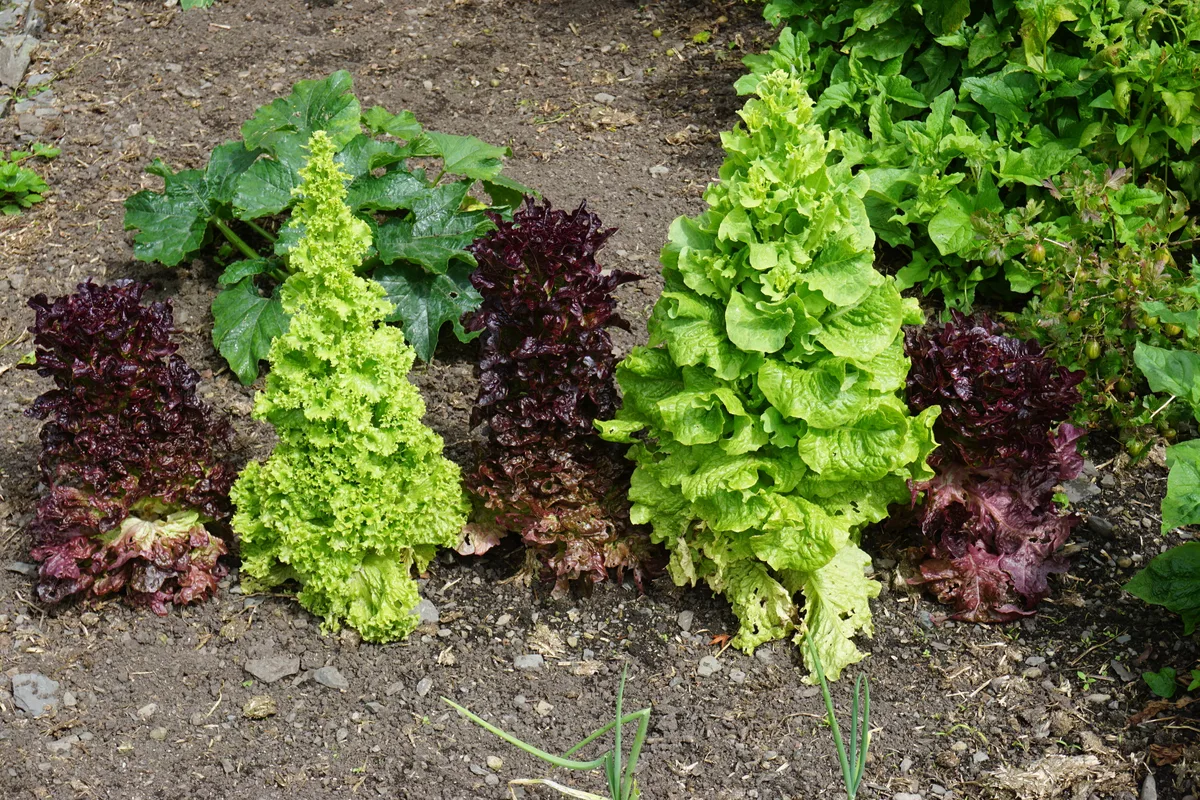
Generally, gardeners get all excited when their plants start to flower. Tomatoes, peppers, eggplants, potatoes, cucumbers, squashes, you name it. Flowers mean that fruit and harvests are on the way.
But in the case of leaf vegetables, you need to do all in your power to stop your leafy greens from flowering and going to seed. In other words, you want to prevent bolting.
What happens when lettuce bolts?
When lettuce bolts, the leaves begin to turn bitter.
They will also toughen up to the point where they just aren’t as tasty as they used to be when they were tender and young.
You might be asking yourself: is there a way to stop lettuce from bolting?
Yes and no. Bolting is dependent on both high temperatures and drought-like conditions.
That should give you a clue as to how it might be prevented. As for a cure, prevention is the best medicine.
Choosing lettuce cultivars that are slow to bolt is one way to preemptively foster a fantastic harvest.
Planting lettuce at the proper times: spring and fall, as opposed to the heat of summer is another way to limit the chance of bolting.
You can also reduce the chance of your lettuce bolting, by planting it in the shade. Or by using shade covers when the sun is hotter than it can handle.
What to do if your lettuce bolts before you have a chance to eat it?
First and foremost, bolted lettuce can always be tossed on the compost.
It can also be cut back to the ground, in hopes that it will resprout. Most of the time it does.
The flowers can be left to attract beneficial insects, such as the all-important pollinators. And if you leave it long enough, it will even go to seed. Leaving you with a seed crop to harvest and resow the following season.
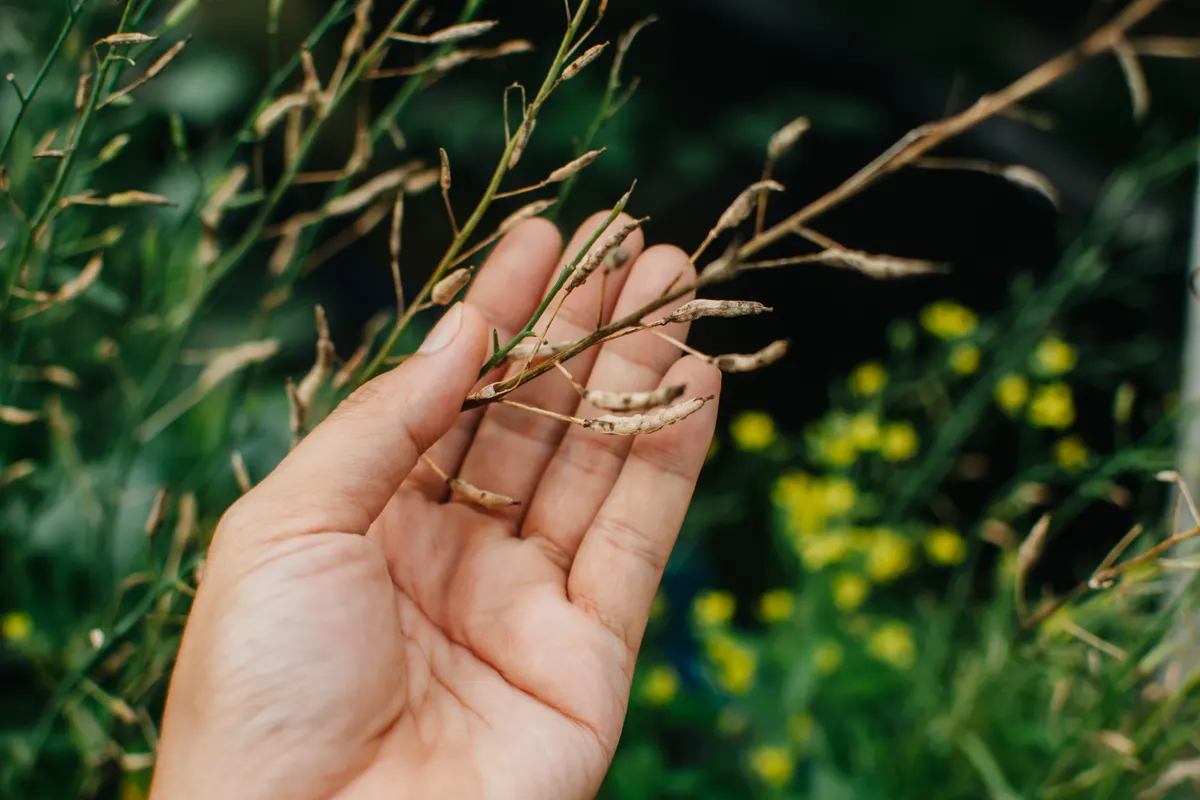
As far as lettuce seeds go, you could even sell them for a little extra income or give them away as thoughtful gifts that keep on giving.
7. Leaves are Discolored, Scorched or Wilted
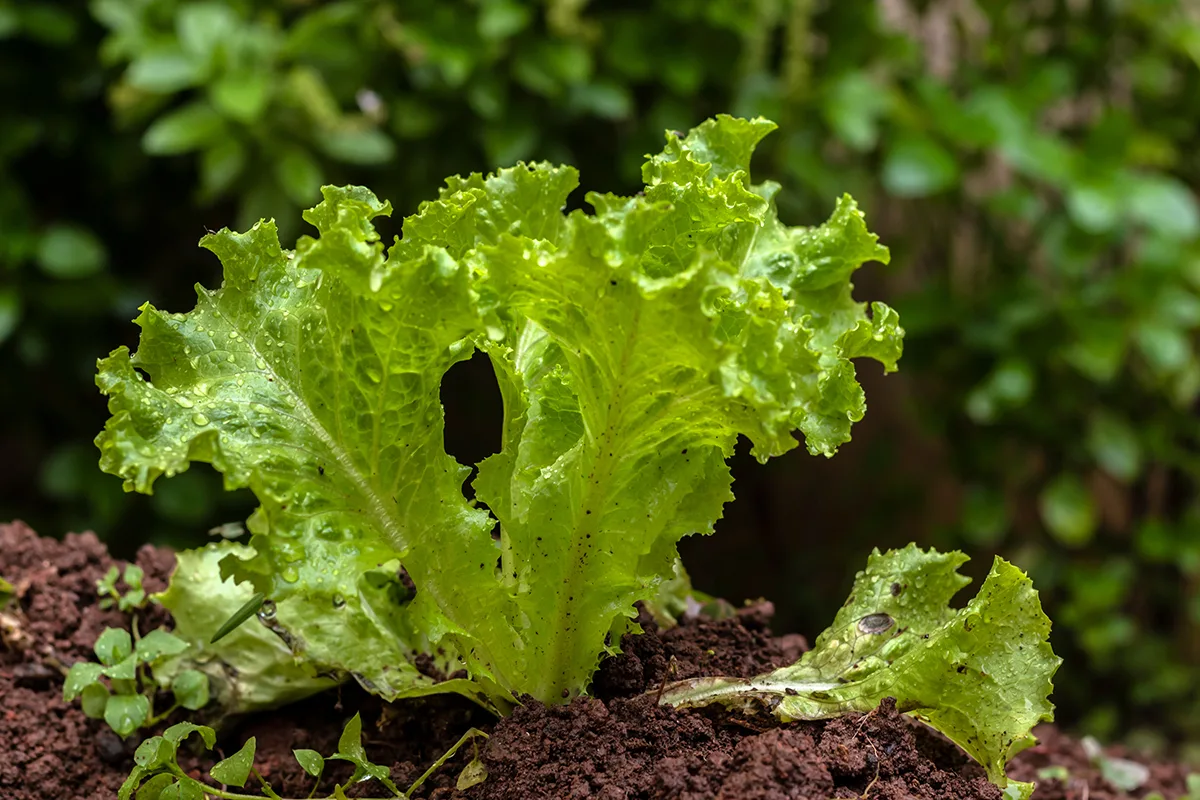
There are several reasons why lettuce can appear less than desirable.
Too much sun is the number one reason for scorched leaves. Read about brown tips and sunburnt leaves below.
Yet, sometimes lettuce leaves turn an ugly sort of brownish color that makes you question if they are safe to eat.
In part, the brownish lettuce leaves you might get from the grocery store are from improper storage conditions, i.e. ethylene damage.
From your own garden, however, leaf lettuce tips may turn brown from the shallow roots drying out. The crusting and browning of leaves may also be caused by bacterial rot. This, in turn, is caused by poor air circulation in rows that are planted too close together.
When planting lettuce, be sure to respect its need for individual plant space and make sure it is well watered throughout the growing season.
Related reading: Plant Spacing – 30 Vegetables & Their Spacing Requirements
8. Holey Leaves
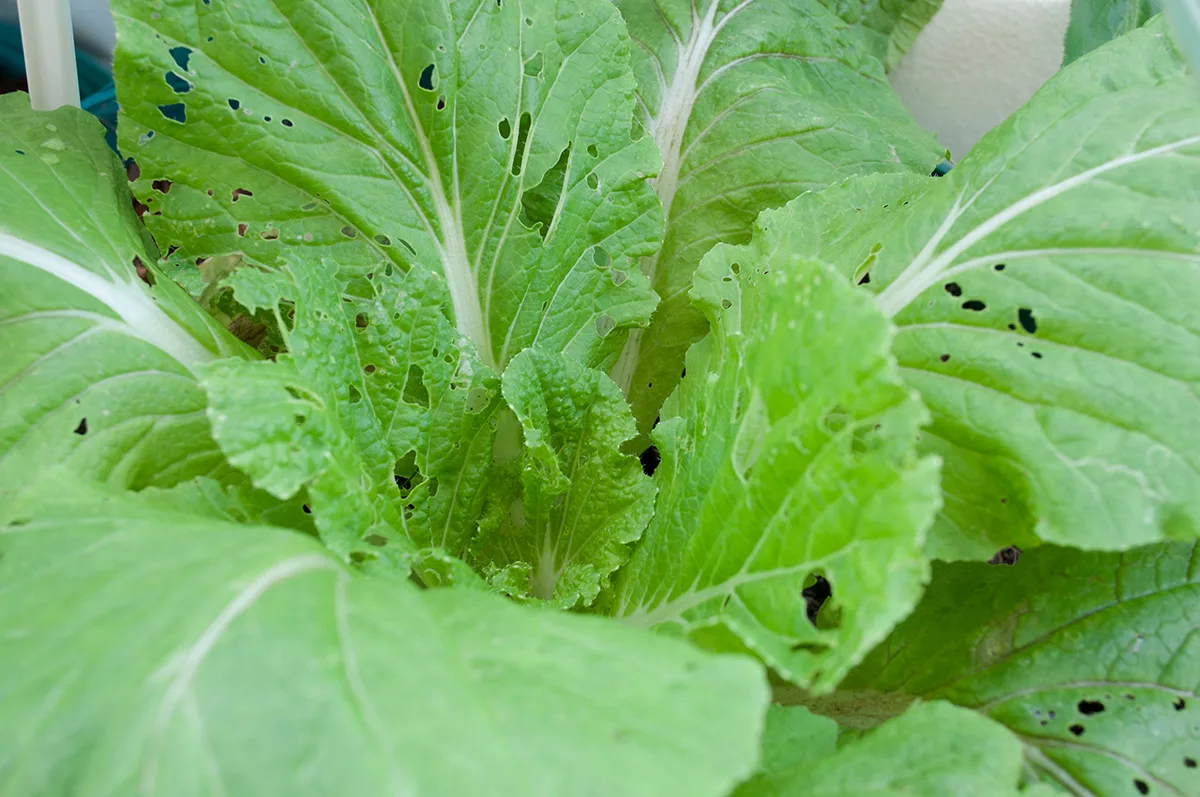
What could possibly be causing all those holes in your lettuce?
Lettuce has a whole slew of insects that love to munch on its tasty green leaves. Sometimes it seems they enjoy the salad leaves even more than you do.
Everything from aphids to armyworms, corn earworms to crickets, those darn flea beetles again, leaf miners, nematodes, slugs, snails, weevils and more.
You might find all of them at once, or none at all.
How to prevent holey leaves on your lettuce?
Companion planting is always a great start.
Encouraging beneficial insects such as parasitic wasps, ladybugs and lacewings is another.
If you start to find holes in your leaves, it is best to identify what might be eating it before taking any sort of action. Then you can take any necessary measures to correct the situation: traps, barriers, mulch or leaf removal.
Only use chemical controls as a last resort.
9. Trails of Slime on Lettuce Leaves
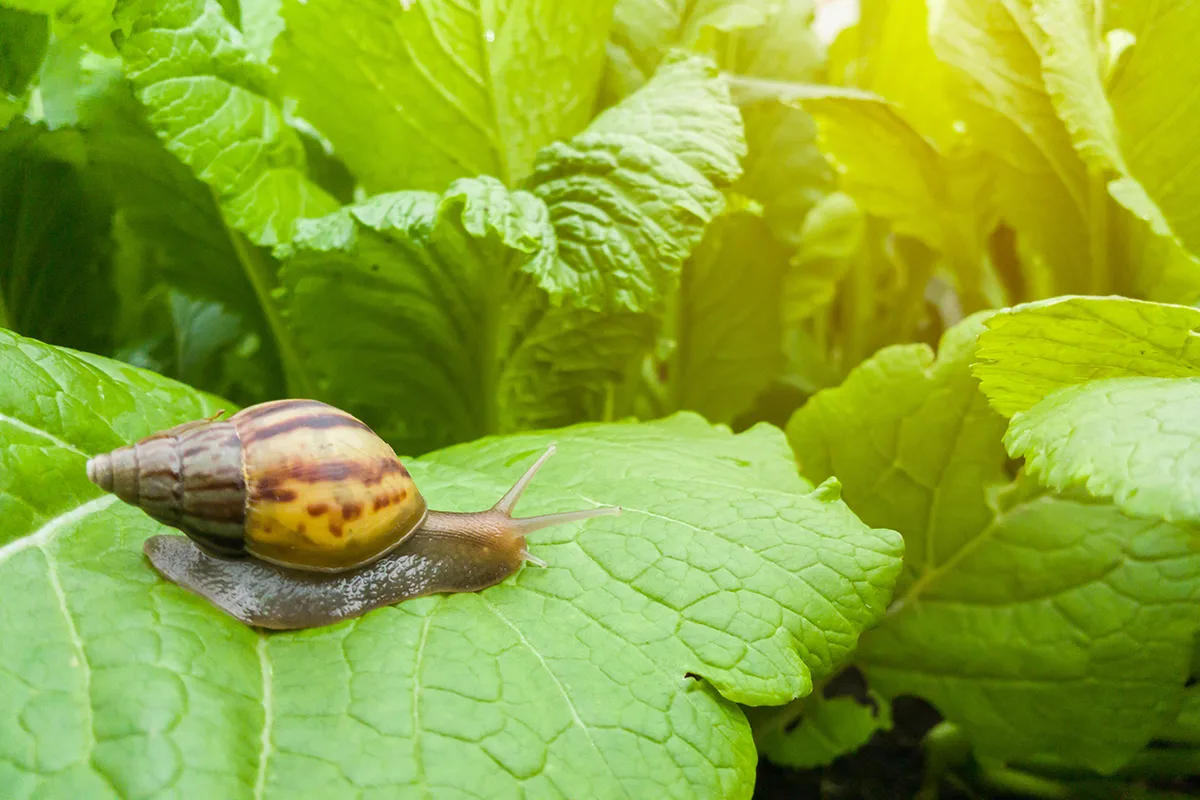
Slimy slugs and snails aren’t only eating holes in your lettuce, they are traversing the valleys and folds too. Leaving a trail in their wake.
If dogs can get sick from coming into contact with slugs and snails, logic would say that you are at risk too.
You should always wash your garden produce anyway. In most instances, you can just rip, or cut, the bad parts of the lettuce off.
As far as keeping slugs and snails away, removing them by hand at night with a flashlight is the easiest (to some: the grossest) way. Others wholeheartedly approve of beer traps. Mulch, copper barriers and ducks can help provide protection too.
10. Brown Tips and Sunburnt Leaves
Just as you burn in the sun at the beach, so will your lettuce leaves scorch in the garden under full-sun.
Again, prevention is the wise way to grow.
If you typically experience hot summers, and you’ll know this from experience, just know that lettuce needs a little shade when the temperatures rise.
Brown tips on the lettuce can be prevented by sowing your seed in the shade of other taller crops. You can also utilize shade covers if necessary.
11. Lettuce Leaves Taste Bitter
Have you ever taken a large forkful of a well-dressed salad and immediately spat it out upon its arrival to your sensitive tongue?
Most salad greens turn bitter when daytime temperatures rise above 70°F (21°C). That’s how much temperature matters. Remember that lettuce is a cool-season vegetable and you’ll never try to grow it in the heat of summer again.
Another reason that lettuce becomes bitter, is from too little water/moisture. If the edges are turning brown, it could be a sign that your lettuce is thirsty.
If you find that your lettuce is still bitter despite your best attempts to keep it cool and moist, a lack of nutrients in the soil could be the answer.
Because lettuce grows rather quickly, it needs available nutrients right here and now. But it’s all about balance, for too much nitrogen can also make the leaves turn bitter.
12. Leaves are Tinted Red and/or Purple

Red or purple lettuce leaves can simply be an issue of variety or cultivar. If you sow those kinds of seeds, that is what you can expect to grow.
But, what if you sowed a green variety of lettuce?
A reddish-purple color can also be a sign of a nutrient deficiency. Particularly that of lacking phosphorus.
It could also be a sign of too much sun.
Take a step back and look at the bigger picture, then narrow your suspicion down. For the most part, your lettuce will still be edible, even tasty. Just sample it and see – before tossing it into a dinner salad, or the compost, for that matter.
13. Troublesome Leaf Spot
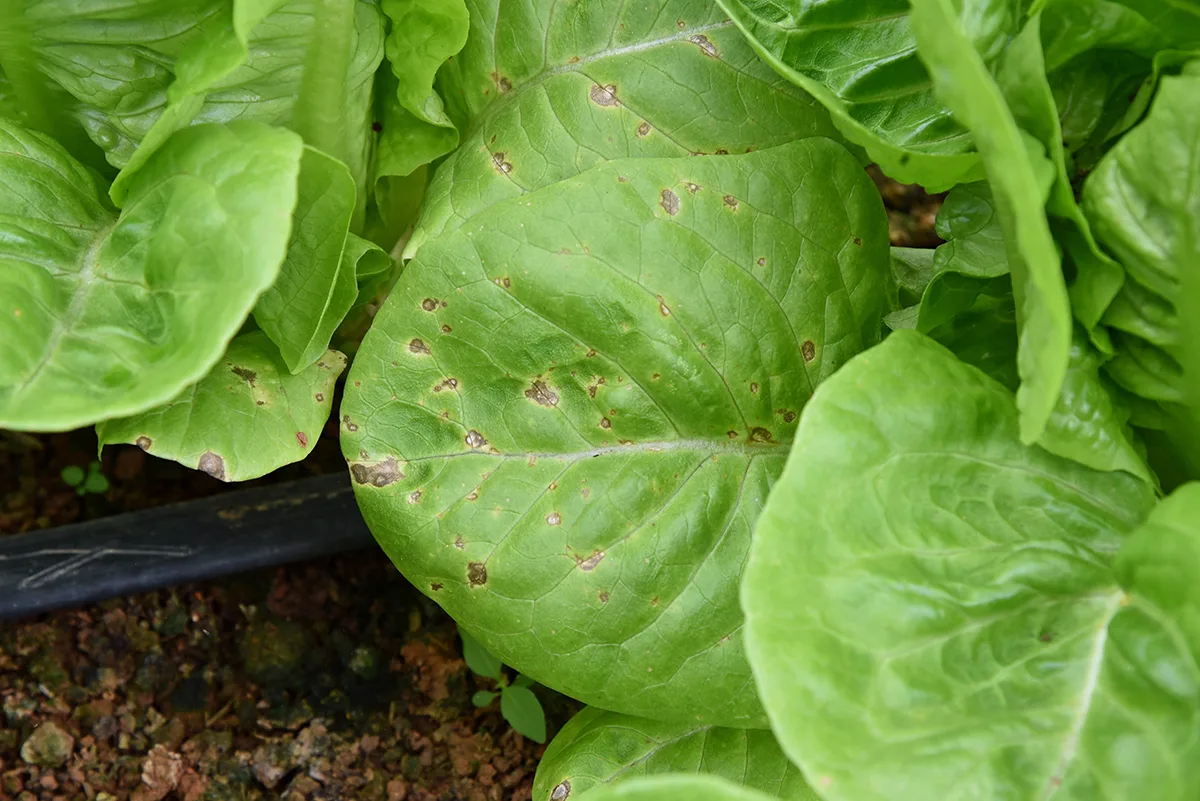
Bacterial leaf spot happens to grapes, tomatoes and peppers. You can even find it on your houseplants and lettuce in the garden. In both leaf and head lettuce varieties.
No matter what you are growing, bacterial leaf spot has specific growing conditions that you should recognize. It thrives in cool and wet conditions.
But isn’t that where you should be growing your lettuce?
It is, within reason.
Another thing to take into consideration is that bacterial leaf spot also spreads easily by sprinkler irrigation. Avoid that way of watering your lettuce if at all possible.
If your first crop of lettuce is affected by leaf spot, take a break with your succession planting schedule and sow some hardier seeds instead.
And again, be sure to get your plant spacing right. I know it’s possible to cram a lot of lettuce into a small area, but your lettuce will thank you for the generous space.
What You Must Do For a Successful Lettuce Harvest
To recap what you should be doing for the best lettuce harvests ever:
- sow lettuce seeds in cool weather
- plant in full sun, unless it gets too hot – then provide some shade
- avoid overwatering of lettuce, yet keep the moisture levels consistent
- be aware of lettuce predators and take care of them accordingly
- harvest at the perfect stage of growth and enjoy
So, is growing lettuce as easy as they say?
That’s for you to experience and decide.

Get the famous Rural Sprout newsletter delivered to your inbox.
Including Sunday musings from our editor, Tracey, as well as “What’s Up Wednesday” our roundup of what’s in season and new article updates and alerts.

